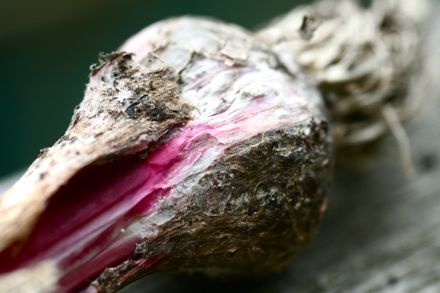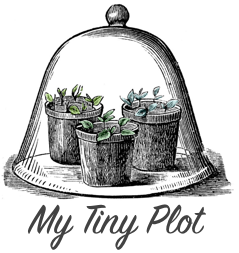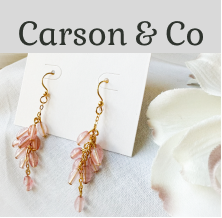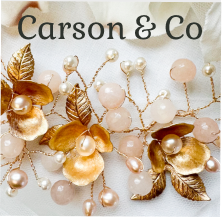White Rot!

Ack! I’ve got White Rot on my Garlic. I noticed that some of them had started to split and the leaves were turning more and more yellow. I pulled one up to investigate and that’s when I discovered this nasty little fungal disease, lurking beneath the surface. It’s not good news. White Rot is serious stuff for which there is no cure. All I can do is lift the affected plants and burn them. I won’t be able to grow Garlic in the same spot for quite some years, maybe even eight! Bummer.
I think the disease must have come in either some bags of manure I bought at the garden centre or else infected soil from potted plants. I grew Garlic last year and it was fine. But the worst of it is I also have a whole crop of onions (very susceptible to White Rot) growing right next to the Garlic. Hmmmm…
I suppose I’m lucky in the fact that I have four separate beds here at mtp. Each one with slightly different soil (one sandy, one stony etc) so I do have some other options. I’m also wondering if I shouldn’t dig all the soil out of that particular bed and replace it? Does anyone have any experience of that?
It feels quite cruel to be thwarted by nature in this way after all the care and attention I’ve put in. Especially, with something so devastating. To be fair though, I have had some very nice Garlic in the past. I guess this is just the year the Garlic gets it huh?
Off to drown my sorrows.
 My Tiny Plot
My Tiny Plot



That sounds awful. I have not had experience with white rot. What about putting down black plastic for a couple of weeks to kill the pathogens?
Apparently that doesn’t work. The spores lie dormant in the soil until they come in contact with alliums again and then they spring back into life – little feckers.
Ohh shame! Slugs and rot begone!
Ugh white rot seems particularly nasty. I would be tempted to clear the whole bed of Alliums to try and stop it spreading further. It definitely seems to be connected to water / drainage in the soil – is that bed particularly wet or in a shaded spot? If it’s any consolation, my next blog post is going to be that I found early signs of blight on my potatoes yesterday :(
I don’t know how much truth there is in this, and it’s advice a bit late…but I had heard or read somewhere (it might have been Monty or Alan) that if you re-use your garlic year in year out, eventually it develops into your own specific, disease resistant, variety with it’s own unique immunity to the peculiarities of your soil. Have you heard this, or did severe sleep deprivation make me imagine it?
My dad also told me not to plant Garlic next to Onions – although in typical mutinous offspring fashion I have done exactly that, very successfully, for the past two years.
If its any consolation I’d swap my garlic to get some lettuce back, or the artichokes or the Pak Choi that the slugs destroyed.
Gack, I’m sorry. I know the feeling of all that effort and dedication only to be thwarted. I agree with Ian, I’d be inclined to clear the whole area to try to make sure it hasn’t spread. I think I’m a bit paranoid though as a newbie.
Very sorry that you lost your garlic. I lost mine too, but not to white rot. Mine went to seed, tiny bulbs and huge stem. Hardly anything to use so I composted them. Very disapointed. Not sure if it was the variety, started them of early and over wintered them. Any advice welcome. My overwinter onions went to seed aswell.
Hi Ian,
Thanks for the advice. The plot seems to be drained well so not wet at all and it’s the sunniest spot in the garden. Puzzling, very puzzling. Oh no, sorry about the Blight. I feel for ya!
Hi Don,
Sounds like good advice. I heard that too. The only problem is that my Garlic ‘is’ saved year on year so I’m guessing that my lovely particular strain that is unique to mtp has, um… got the White Rot. Dagnamit!
Pingback: My Tiny Plot » Blog Archive » Strawberry Time
We get white rot on our allotment – once it’s set in it’s pretty difficult to get rid of. I have to admit I love onions and garlic so much though that I take the risk of growing them – more often than not they are affected but only a couple, making the harvest big enough to justify the risk! Also, 7 years is how long the spores stay active in the soil but mos literature advises against allium cultivation in an infected plot for much longer. I have read in some books not to use the same plot for onions for at least 15 years! Yikes.
I think it would be a good idea to clear away the soil and replace it. Hard work, but it’s the most likely way to get rid of the spores, even if nothing is 100% certain.
Just found this on some shallots, first year of having an allotment so a bit miffed!! I have read that this can stay in the soil for 20 years and there is no real cure for gardeners. But I believe that you can get extract of garlic and this encourages the spores to grow (Fools them into thinking there are onions to infect) and they just die away once their cycle is finished. One of your other replies recommended removing the soil in the affected area, this would work as well. Still managed a good crop of shallots though and will not be using the area again for 4 years for onion type plants; although I have some onions near where the rot is I will have to wait and see how widespread it is by checking them when I pull them.
Mmm yesterday I found I had this too and my garlic is in a well drained sunny spot on my allotment. Had no problems before either.
Really sorry to read about your garlic. I hope it is not all affected and you still get to try some of it this year. We lost almost all our garlic and onions in the first year at our current house. The garden came with a ready made vegetable plot, but we were not able to talk to the previous owner about which beds had suffered from blight, rot, etc. in previous years. We just planted and hoped for the best. Unfortunately the onions, garlic suffered from rot and the potatoes from blight.
We did effectively end up replacing the soil. As the original soil was clay with poor drainage, we are now growing in tall, well drained raised beds, slightly offset from the original beds. For the last few years we have not had a problem with diseases (just the usual slugs, pigeons, insects and now our own hens !).
You might need to grow cover crops on that spot and rotate things like peas and beans for a while. Work in a ton of compost and wait 3 years to plant garlic in that spot. If you are turning in your cover crop and working in that “green manure”, you might be surprised. I have never had the problem you are experiencing. I save my best garlic each year and in October, I plant only the biggest cloves of the best garlic. SO far so good. I hope i don’t get the ‘plague’
I love your blog. Your blog motivated me to start my own:)
http://www.harmonyfarmsportland.blogspot.com
I hope you find a solution to your garlic problem. Not being able to grow garlic would be a tough blow.
Peace out,
Kirk
hiya
Awful news, this. I had a narrow escape a few years ago when I bought some onions and realised *just* before I threw the haulms into the composter that they had white rot. Needless to say they went in the dustbin instead and boy did I scrub down the worksurface and chopping boards!
Everything I read about it says you can practically never grow alliums again. It persists in the soil for at least 20 years and if you ever get anything of the allium family (including ornamentals) near a spore, the clock gets reset and off you go again. There’s a lot of research been done in the US on this. The RHS is also very pessimistic, though does mention you can have the soil sterilised (anathema to the organic gardener!).
Beware of tools. Contamination can spread so easily that way, and on boots. If you’ve trodden or hoed in the infected bed and then moved to another bed before you even realised you had it, chances are it’s moved house already, no matter what your soil type is in each bed. Even birds hopping about can transfer it on their feet.
About the only thing I can advise is to grow your alliums from now on in pots, in clean soil or compost. Use them as a decorative edge to the beds or focal points, and never use the same tools as on your main beds.
I look forward to seeing some fantastic planters of leeks and the like next year!
Hi, Just found your site when looking for recipe for plum chutney. It’s Great!
I lost my shallots this year too and also previously healthy chives nearby! Have also suffered potato blight in a bed I had tomatoes in 3 years ago which had blight. Does anyonr know if potato blight and tomato blight are connected? Despite my losses I love my plot and wouldn’t be without it. It’s a geat leveller.
Pingback: My Tiny Plot » Blog Archive » Planting Elephant Garlic
Hi There
From NZ just discovered white rot has increased majorly this year from just acouple og bulbs last year.
Got this treatmenrt that am going to try from another site.
Almost all the diseases that garlic gets are fungi and almost all can be prevented or minimized inexpensively. Removing them from the beds where your garlic is grown involves fertilizing with corn meal as it is anti-nematodal and anti-fungal, so is corn gluten meal, which has other properties as well. Another thing you can do is to plant brassicas of all kinds and let them get of good size and then till them under – the chemicals released in their decomposition are toxic to fungus and nematodes. Another trick is to shread a bushel of brassica vegetables raw and let soak overnight, strain and dilute the liquid and irrigate the beds with the water and water in for a quick kill. Wild mustard is said to work quite well and I’m going to try it soon and let you know how well it works. All of these treatments are effective in reducing soil populations of the offending creatures to tolerable levels while being organically compatible.
All the beat.
V